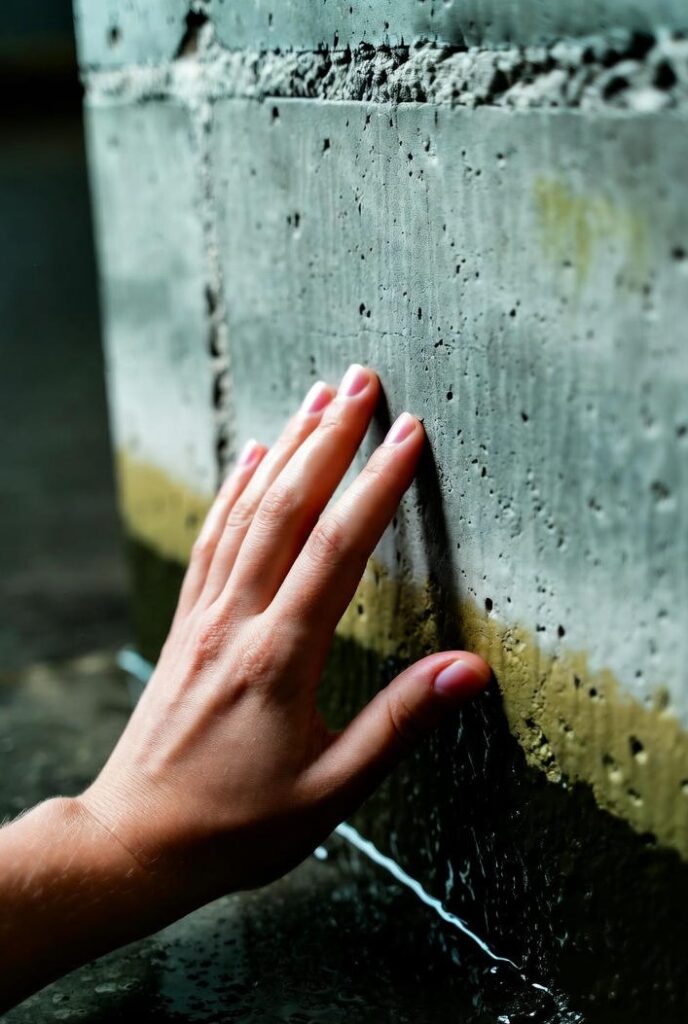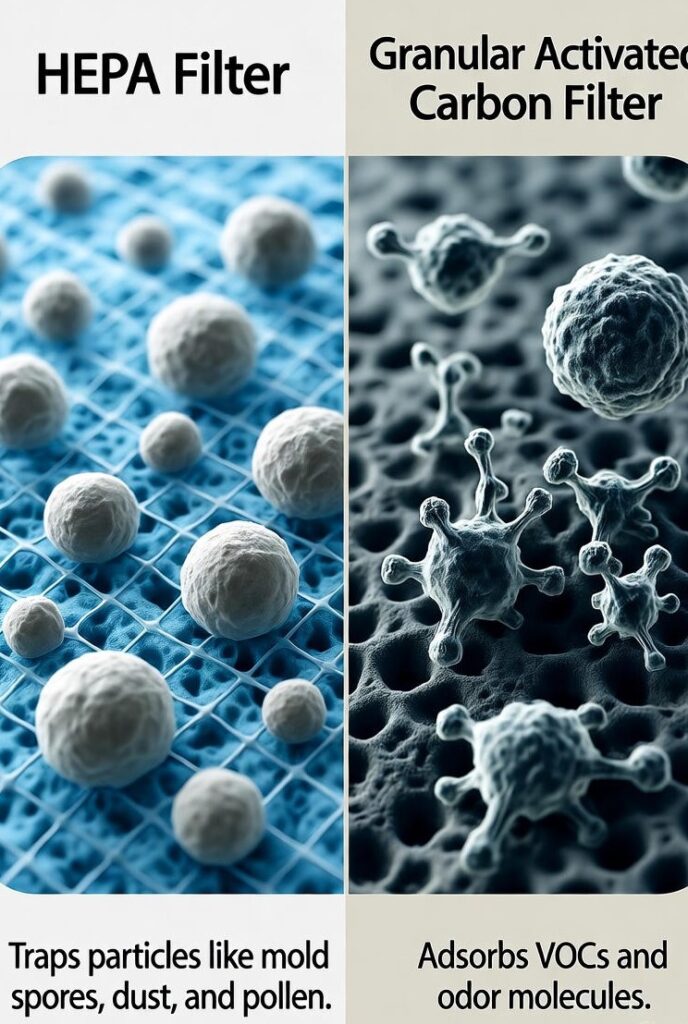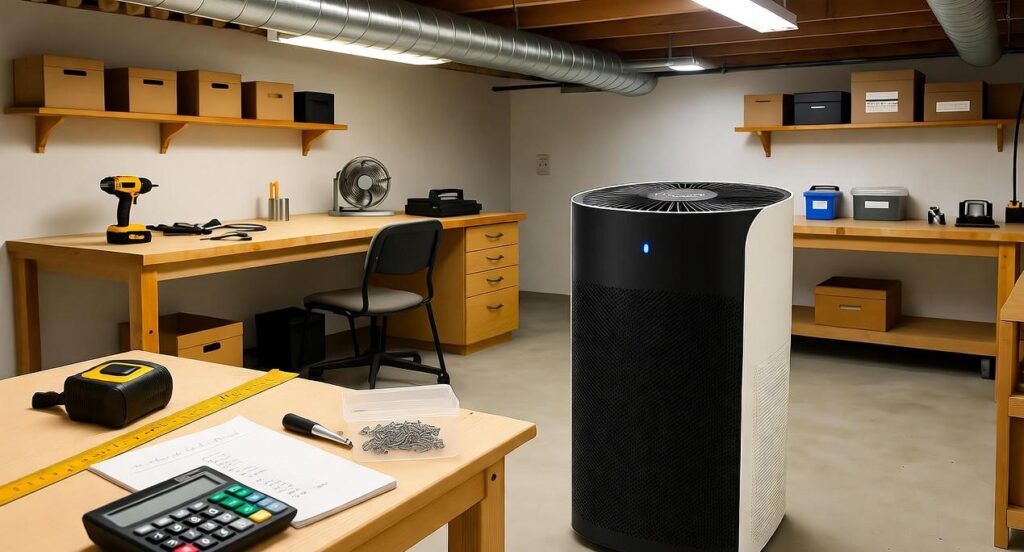Basement Air Quality Matters, Here’s Why?
You hit the bottom stair and the air feels… wet. Not hot, not cold—just wet. Your nose wrinkles at the “wet-dog-meets-old-newspaper” smell, and within minutes your throat scratches like you swallowed a spoonful of dust. I’ve carried a particle counter into dozens of basements just like yours; the numbers never lie: mold-spore counts triple the upstairs level, humidity parked at 70 %, and VOCs off-gassing from that 1970s paneling. The good news? You don’t need a total remodel. You need a simple, three-step game plan—and the right filter combo—to make the basement smell like… nothing at all.
Step 1 – Dry It First, Filter It Second
Hunt the Water Source
- Feel walls for cold, damp spots—condensation loves un-insulated concrete.
- Check floor drains and sump pits; a dried trap can burp sewer gas that masks itself as “basement smell.”
- Rent a $30 hygrometer; anything above 60 % RH is a mold party.

Step 2 – HEPA vs. Carbon Filters: What Does Your Home Actually Need?
I open up purifiers on my workbench and count filter pleats for fun. Here’s the breakdown:
True HEPA – The Mold-Spore Hunter
- Captures 99.97 % of particles ≥ 0.3 microns—includes mold spores, dust-mite parts, pollen.
- Needed when you see visible dust in sunbeams or your sinuses go crazy downstairs.
- Won’t touch odors; that’s not its job.

Activated Carbon – The Odor Eraser
- Adsorbs (sticks) VOCs, sewer gas, that musty “old house” smell—not masks, removes.
- Weight matters: thin mesh sheets = gimmick. Look for pounds of granular carbon.
- Useless for particles; pair with HEPA or you’re only fixing half the problem.

Which Basement Needs What?
- Damp + musty smell only → heavy carbon + basic pre-filter.
- Damp + visible dust + allergy flare → True HEPA + chunky carbon.
- Recent flood or visible mold → HEPA + carbon + professional remediation first.
Step 3 – Pick the Right Purifier Size (CADR Talk Without the Nerd-Out)
Clean Air Delivery Rate (CADR) tells you how many cubic feet of clean air the machine spits out each minute. Rule of thumb for basements:
- Measure your square footage.
- Choose a purifier whose CADR (dust) number is at least ⅔ that figure.
- Oversize if the ceiling is over 8 ft or humidity routinely > 60 %—mold multiplies fast; you want 5 air changes per hour, not two.
Quick Hit List for Shoppers
- Pre-filter you can vacuum—saves the pricey HEPA from hair clogs.
- Filter-change indicator that reads actual particle load, not a dumb calendar.
- Drain hose option on dehumidifier—set it, forget it, no bucket sloshing.
- Quiet ≤ 50 dB on high—basements echo; louder units get turned off.
Bottom Line – Your 48-Hour Action Plan
- Rent or buy a hygrometer today—set dehumidifier to 45 %.
- Pop in a True HEPA + 1+ lb carbon purifier sized for the space.
- Vacuum walls and floors with a HEPA-shop-vac to remove dormant spores.
Do those three things this weekend, and Monday evening the basement will smell like… nothing. Trust the particle counter—and your newly happy lungs.
This is What an Air Purifier Will Never Do
- Remove existing mold on studs, drywall, or grout. Filters can’t reach the moisture-rich film where mold roots (hyphae) dine.
- Fix the water source. Humidity above 60 % or a seeping wall means the colony throws a spore party every hour.
- Pass a mold inspection. Home inspectors swipe surfaces, not air. A spotless spore count won’t hide visible growth.
Real-World Playbook – Use the Purifier Right

- Remediation First
- Scrub hard surfaces with detergent, cut out porous material > 10 sq ft, run a dehumidifier ≤ 50 % RH.
- Call a pro if HVAC or framing is involved.
- Purifier Second
- Park a HEPA + chunky carbon unit in the room after cleanup to grab stray spores and odor.
- Size it for 5 air changes/hour (CADR ≈ ⅔ room sq ft).
- Maintenance
- Change filters on schedule; a loaded HEPA can become a petri dish in a damp basement
- Keep the dehumidifier humming—otherwise the colony simply re-flares.